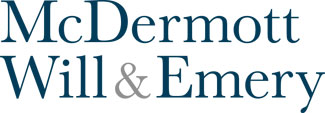The Department of Justice announced in February that it would intervene in a False Claims Act suit filed against former Tour de France winner Lance Armstrong and others by former teammate Floyd Landis. Reports indicate that in 2010, Landis filed a lawsuit, captioned United States ex rel. Landis v. Tailwind Sports Corporation, et al., in the U.S. District Court for the District of Columbia. The lawsuit alleges that Armstrong and his teammates violated the terms of a $30 million sponsorship contract he and his cycling team had with the U.S. Postal Service (USPS) by taking drugs to enhance their performances.
USPS sponsored Armstrong’s Tailwind cycling team from 1996 through 2004. During that time, Armstrong and his team took more than $30 million in sponsorship fees. The USPS claims Armstrong violated a contractual promise by regularly employing banned substances and methods to enhance their performance, in violation of the USPS sponsorship agreements. Those sponsorship agreements gave USPS the right to place its logo prominently on the cycling team’s uniform, among other promotional opportunities. However, the agreement also required the cycling team to comply with all rules of cycling’s governing bodies. Those rules prohibited the use of performance enhancing substances and methods.
For years Armstrong and others denied that the team used performance enhancing drugs, but in October, 2012, the U.S. Anti-Doping Agency (USADA) issued a report concluding that Armstrong used banned performance enhancing substances, starting in at least 1998 and continuing throughout his career. The time Armstrong and teammates were alleged to have been “doping” overlaps significantly with the term of Armstrong’s USPS sponsorship.
After the USADA report, Armstrong admitted in an interview with Oprah Winfrey that he used banned substances and methods throughout his career, starting in the mid-1990s. He admitted having used banned substances during each of his seven Tour de France victories, including the six he won while sponsored by USPS.
The U.S. Government’s intervention complaint alleges that riders on the USPS-sponsored team “knowingly caused violations of the sponsorship agreements by regularly and systematically employing substances and methods to enhance their performance” and, as a result, “submitted to the United States false or fraudulent invoices for payment.” In addition, the complaint alleges that the Defendants “made false statements, both publicly and to the USPS, that were intended to hide the team’s misconduct so that those invoices would be paid.” All in all, according to the government, “[b]ecause the Defendants’ misconduct undermined the value of the sponsorship to the USPS, the United States suffered damage in that it did not receive the value of the services for which it bargained.” In support of its allegations, the government details the prohibited substances used by the Armstrong team, including erythropoietin, human growth hormone, anabolic steroids, and corticosteroids. It also details delivery methods used, including blood re-injections and “the oil,” a mixture of testosterone and olive oil. In addition, the government complaint contains a litany of Armstrong’s denials of banned substances use over a ten-year period.
While the Government notified the court that it was joining the lawsuit’s allegations as to Armstrong, the Tailwind cycling team, and the team’s manager, it advised the court that it was not intervening in the case as to several other defendants named in Landis’s complaint.






